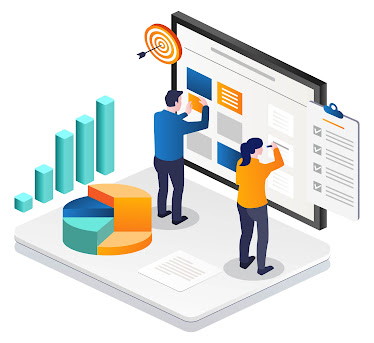
An annual report is a significant financial document that tells shareholders and other stakeholders how you’ve performed over the previous financial year. Such financial document needs to be published annually to show a business’s operation and financial condition. It provides an opportunity to showcase your success to all those aspiring investors. Its design can significantly impact how effectively the information comes across. Annual report designing is no easy feat. This giant document has to wow its readers, not just with its words but also with its appearance. Everything from the feel of the paper to the font used will impact a reader’s experience of your report and determine if they consume the content.An annual report composition needs an optimum combination of top-notch copywriting skills, photography and professional graphic design. The content needs to be accurate and hold the reader’s interest. It’s really tough to achieve the right balance. Similarly, the layout needs to be engaging without overpowering, which boils down to the design's strength.
A great annual report is one the reader is inspired to pick up in the first place and can’t put down. It must be impressive without appearing boastful and engaging but without too much fluff. Hard facts and statistics are a must include. While lovely stories about initiatives have a place, these must be balanced with performance-based insights. Content is the axis of annual report designing, so in an ideal world, you’d get this firmed up and design the report’s layout around this. While the content is produced, you can still work up concepts for the report’s visual identity. It’s a good idea to do this in tandem with the content being written so you can get approval on things like fonts, graphics, and other critical elements of the design, before beginning work on the layout. Here are a few tips that you can use while designing an annual report.
Interactive Cover Design
‘Don’t judge a book by its cover, but do we follow that? A big no! That’s no one’s fault. The first thing your annual report needs is a cover that appeals to your audience because it’s our habit to evaluate something by its cover. Something that talks for itself but not so loud it’s off-putting.
Summary Page
A summary is a great way to compose the essence and set the tone for what the reader will go on to discover in more detail within. It’s essentially an introduction that draws attention to particular aspects of the report and summarises (without going into too much detail) the primary outcomes. It’s an excellent way to set the tone for the annual report that makes a great lead-in to the meatier content you’ll want to break down section by section.
Exclusive Content Page
The purpose of your annual report is to tell the story of your business over twelve months, and no doubt, given such a significant time frame, there’s a lot to say. It’s reasonable to assume that not everyone will read the report in its entirety, so the content should follow a natural flow throughout.
Meaningful Images
There’s nothing instantly more off-putting than vast text sections without an image to contextualise. Solid pages of text look visually unappealing, but they also suggest a big-time investment on a reader’s part.
Graphs and Charts
Most annual reports contain a lot of data by nature that just goes with the territory. Some people naturally absorb information more accessible when presented in a visual format, which is why the trusty infographic is one of your best design tools when designing an a
nnual report people want to read.
Designbox is also an annual report design company that tries to o the best annual report design incorporating infographic-inspired design elements, including data visualisations, illustrations, and icons. Because an annual report consists of valuable corporate and financial information about the company, it doesn’t mean it should be just a book of numbers. They understand that yearly report design is a vital communication tool for your business, so it has to be interesting, highlighting your potential stakeholders' achievements, investments, and successes. Designbox includes additional detailed information besides financial statements, such as a historical summary, actual business results, statistical data, company plans, and policies that is difficult to read with the perfect spice of graphic representation.
Comments
Post a Comment